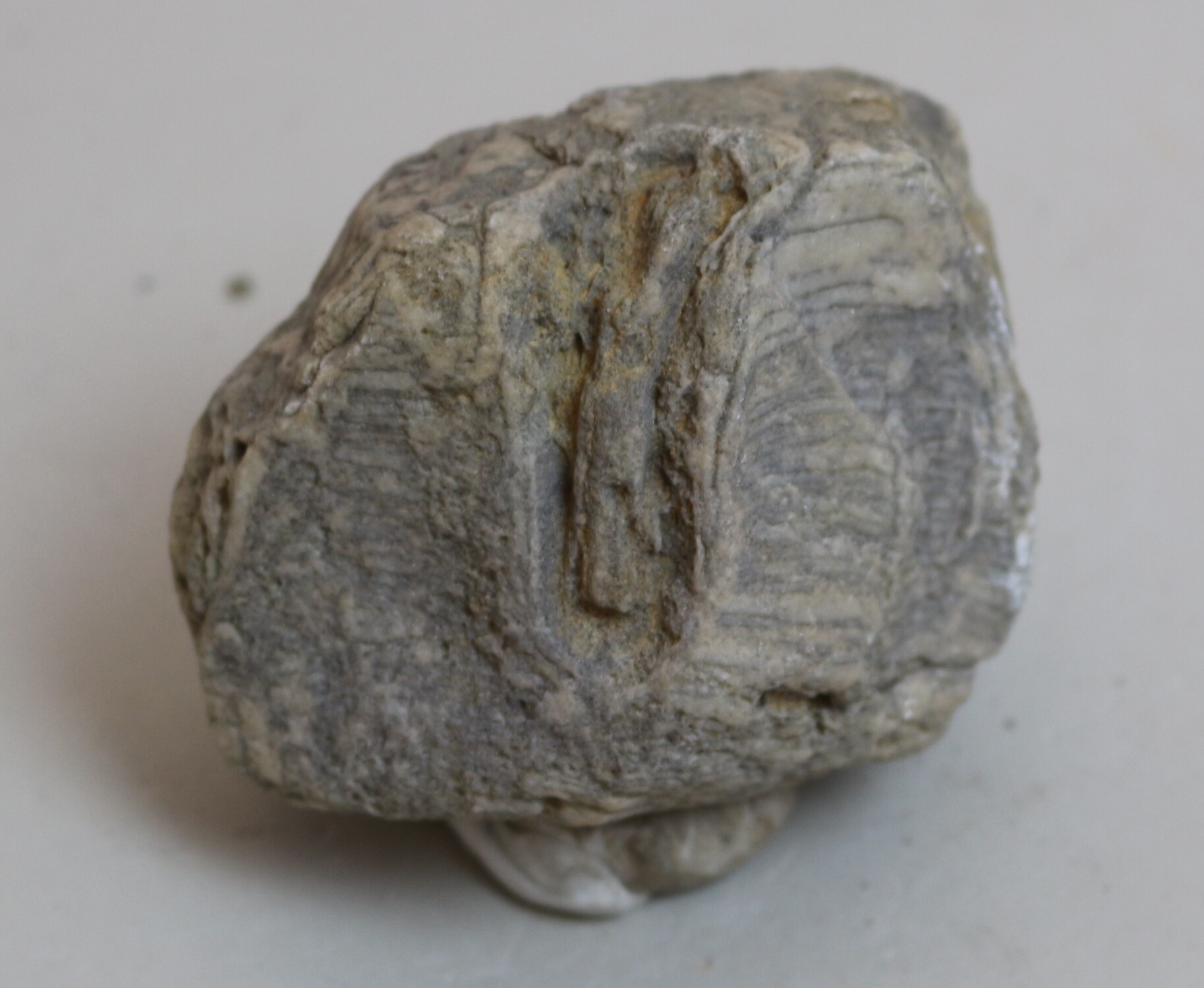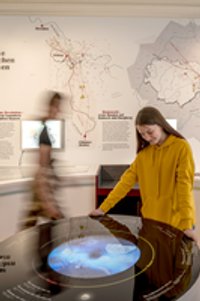Sandstein aus Südschweden (Unterkambrium) mit Diplocraterion Grabgängen. Sie entstehen im dem noch weichen Sand durch wurmähnliche Lebewesen.
Diplocraterion ist eine Gattung von Spurenfossilien (Ichnogenus). Es handelt sich um vertikale, U-förmige Grabgänge im Sediment, die durch sogenannte Spreiten, d. h. von linearen Strukturen, die außerhalb der und parallel zur eigentlichen Grabröhre verlaufen und deren vormalige Position im Sediment anzeigen, charakterisiert sind. Diplocraterion kommt vor allem in siliziklastischen Ablagerungen verschiedener mariner Milieus ab dem Unterkambrium vor und gilt als Fress- und Wohnbau kleiner wirbelloser bilateraler Tiere.
en

